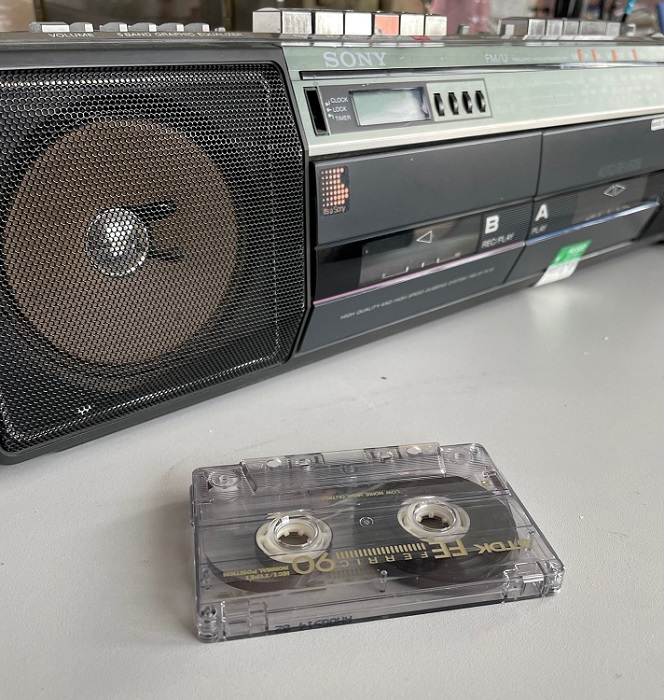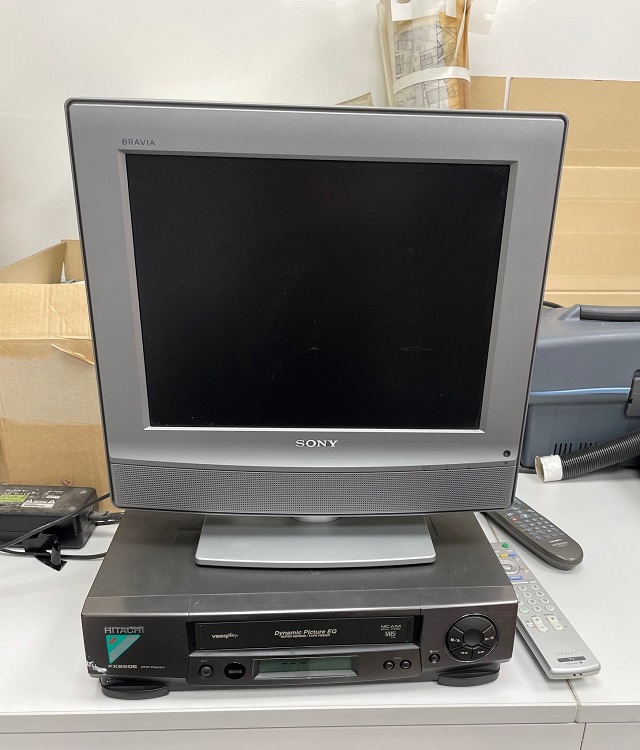Digital Preservation
Archives have traditionally been thought of as repositories of physical records such as papers, manuscripts, volumes, maps, photographs etc. However, as technology develops and changes, archives are faced with new challenges, including what to do with records in a format that are now or will be obsolete? In this blog we’ll be looking at what we are doing with audio-visual materials in danger of becoming obsolete.
Material that we hold which is in danger includes cinefilm, VHS tapes, cassette tapes and many others. The main issue is ensuring that the information on this material is preserved and can be accessed by future visitors.

One of the first issues is ensuring we have the technology and machines to view or listen to the material. Over the last year, members of staff have donated a cassette player, a VHS player and an old television to allow us to check the material we hold. It means it is also possible for visitors to watch VHS tapes when they visit, provided this is arranged in advance.
This allows us to check and catalogue the material, however the information is still in danger of being damaged or becoming inaccessible if a machine breaks. It is therefore necessary to ensure we have another digital copy which can be saved on the digital preservation site we use: Preservica.
In many situations, we do not have the capability to do this ourselves, so we send material to the Wessex Film and Sound Archive, based at Hampshire Archives, who then make the copy for us. We also store some of our more vulnerable material there as they have better storage conditions for that sort of material, for example cinefilm needs to be kept at a cooler temperature than our strongrooms.

However, in the case of CDs and DVDs, we can produce digital copies ourselves. This involves copying the files, changing the format (if necessary), completing any editing that may need doing, and uploading the file to Preservica. If we decide we need to edit a video, we keep two copies - an unedited and an edited version. We also note on the catalogue what editing has taken place.
The ability to edit can be useful when unexpected items turn up! For example, when copying a DVD which had originally been copied from a VHS tape before coming to us, we expected to find a recording of the ITV news with a feature relating to the collection being catalogued. Instead, to the great surprise of the archivist cataloguing it, the film Calendar Girls started playing! The ITV news recording was eventually found at the end of the film. When the digital copy was made, the decision was made to edit the video so future viewers wouldn’t need to sit through the 1 hour 48 min film first.
We are still in the early stages of digital preservation with more to learn, new challenges to face and questions to answer. However, we have taken the first steps to ensure our audio-visual material will be around for many more years to come.
